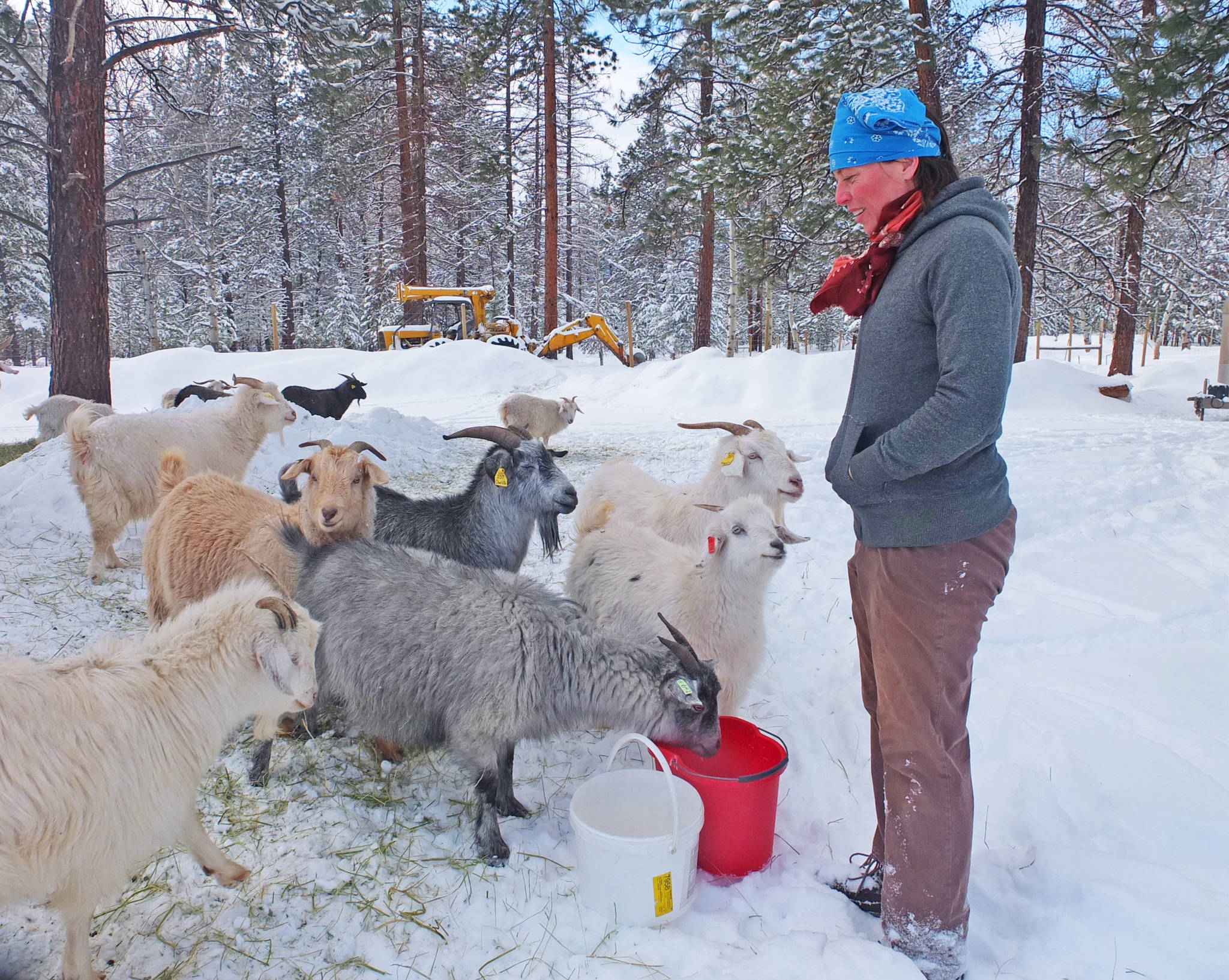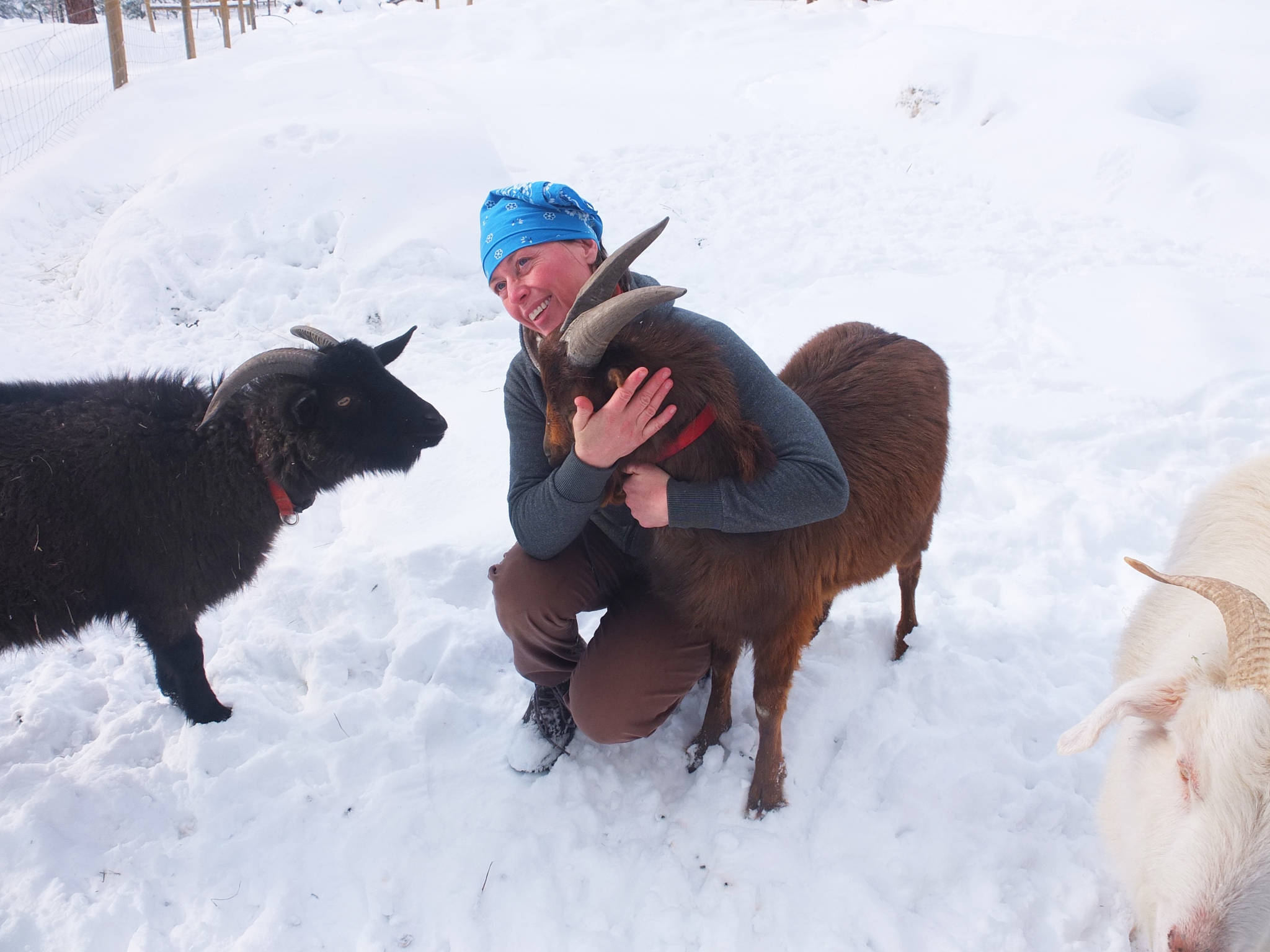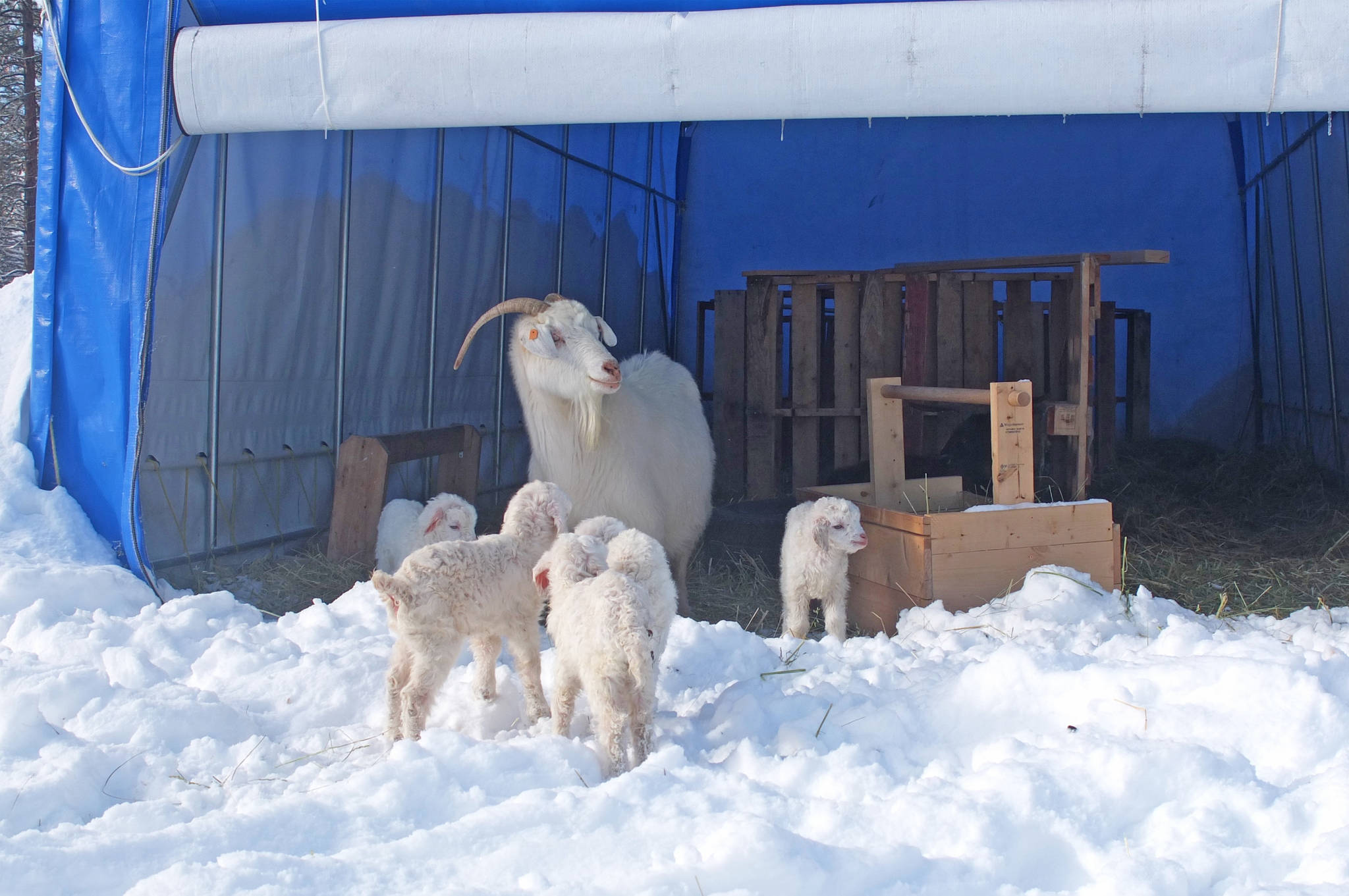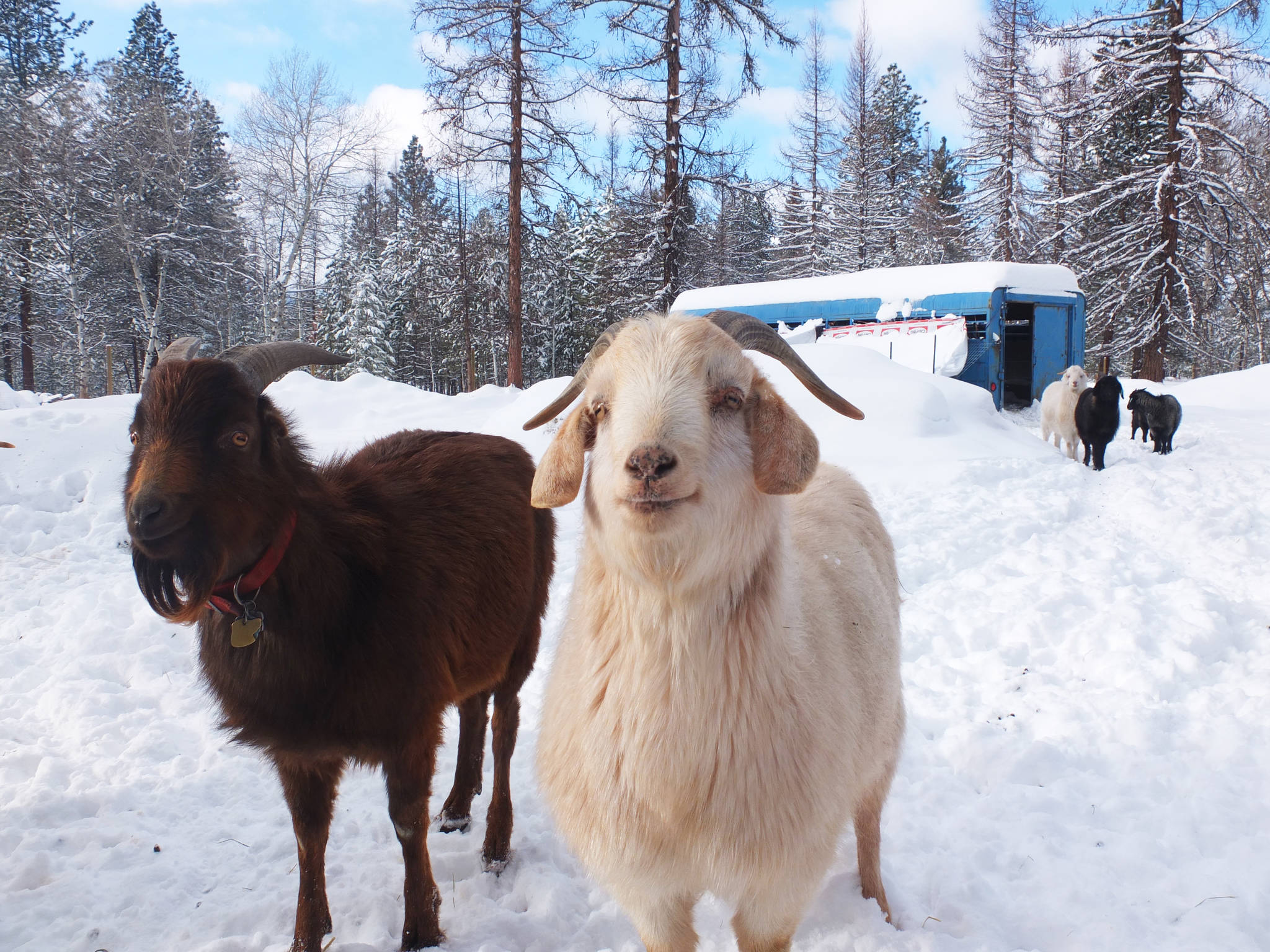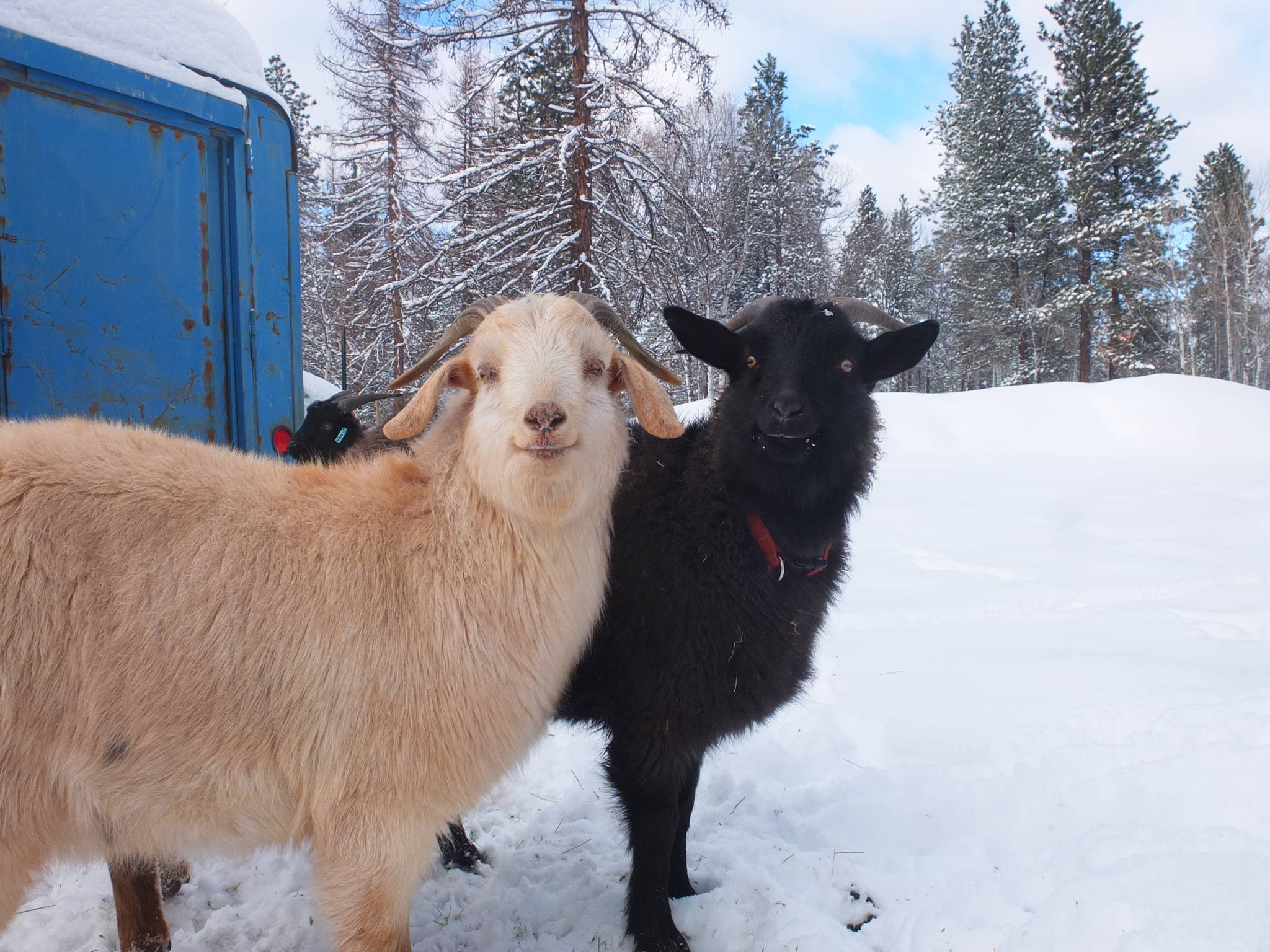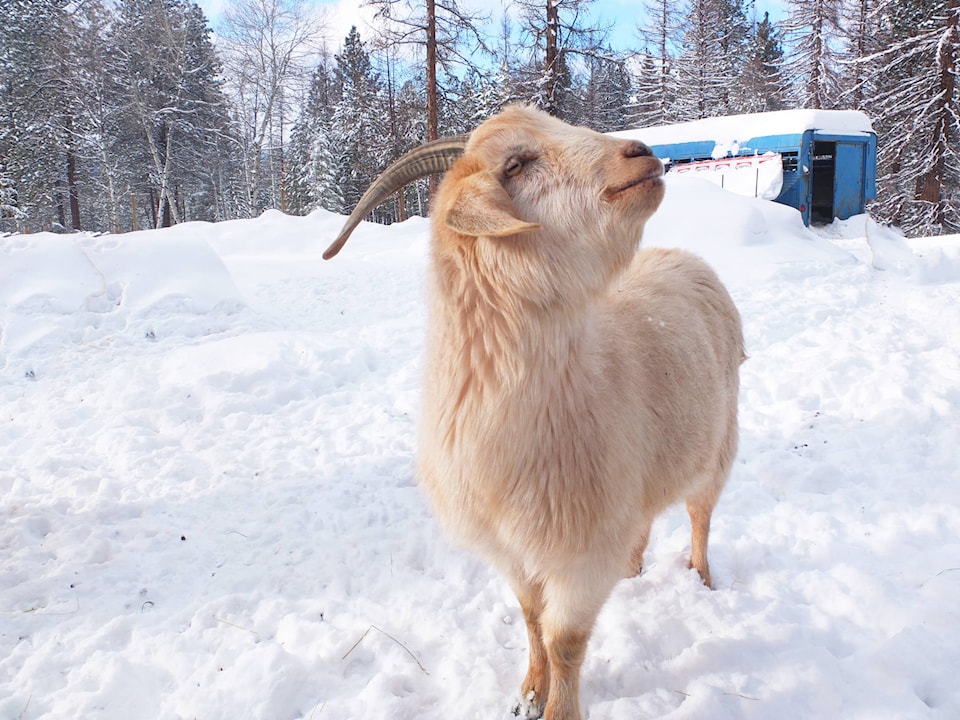Cailey Chase of Vahana Nature Rehabilitation just gained 14 new members to her growing cashmere goat family.
Chase has been involved in invasive weed management for many years. She started out hand-pulling and spraying weeds, and has since grown her own business, using goats for weed management, which now consists of 72 goats.
Chase says she is working on growing the herd now so that come mid-May, the kids (baby goats) can get to work eating weeds with the rest of the herd.
“We had about 50 goats last year, it’s a small crew considering the amount of invasive weeds there are in the Kootenays,” said Chase, who hopes to continue to expand the business in order to cover more ground. “The kids are growing, their horns are coming in and the babies have come through the cold really well. They are strong and healthy. There is a pretty even split, a few more females than males which is good.”
Last year, Chase and the goats covered several different areas including the Kimberley Wastewater Treatment Plant, property around Premier Lake, Wycliffe, Sullivan Landing in Townsite, and the Tobacco Plains Indian Band in Grassmere.
This season Chase hopes to work as many days as possible, with work beginning in mid-May and potentially lasting until the snow flies. Chase hopes to yet again set the goats to work at the Wastewater Treatment Plant (pending), has confirmed another contract for Tobacco Plains. She is also working on grant funding to mitigate the weeds in the Lois Creek Trail System.
When it comes to shepherding as a way of dealing with invasive plants, Chase says it’s a natural fit.
“Consider it another tool in the tool box,” explained Chase. “Because I have so much experience with hand pulling and spraying, I know first hand that both of those methods are really labour intensive. The goats require less labour (for people) when it comes to weed management. It’s the most natural thing, for goats to eat and travel. Although it is labour intensive to move the herd from camp to camp, the goats add to the soil through a natural process which is another advantage. Also, compared to hand pulling and cutting, it is way easier for the goats to get rid of biomass.”
When Chase and the herd set out to an area for weed management, she first sets up the goats’ pen and her camp, since they are typically there for a week or so, depending on the size of the area and the amount of weeds.
She then checks out the site, walking it herself and observing the density of weeds and where they are located, so she can essentially map out a grazing pattern.
“We walk the goats through the weeds, letting them eat what they want. We move on, and circle back, creating a sort-of spiral pattern throughout the day,” Chase explained.
Chase added that she is excited for the coming season and the prospect of expanding the business.
“There are so many weeds in this area and this is just another method to help mitigate them,” she said. “There are many different species of weeds, but most of them come from Eurasia (blue weed) and Russia (nap weed), and that’s where goats come from. Neither the weeds nor the goats are native to North America. The more I learn, the more and more it makes sense to have the goats as a method of invasive plant management.”
Not only that, but Chase referenced a PBS Special with the following quote, “shepherds are working towards participating in what nature is trying to accomplish. Recognizing the importance of the animal, plant, soil connection, these goat herders work to convert weeds into something that feeds the soil life.”
“Essentially, when land is cleared the Earth puts a scab on the exposed land, and weeds are the first to arise in those areas. The annuals come in first and die in the fall, and that dead plant matter adds to the soil,” added Chase. “Then there’s the bi-annuals, and the perennials, which have big root systems that get distributed through the bare soil. The goats actually help with that natural healing cycle and they help to recycle the plants faster. They help the Earth heal these spots.
“When spraying is used as a method of invasive weed management, specifically in grassland areas, it kills the fungus in the soil, creating a higher density of bacteria. Therefore, it is only friendly to the weeds. In forests, for example, there is a higher ratio of fungus to bacteria, say 50 to 1. In grassland areas it’s more like ratio of 1 to 1.”
Chase is currently busy caring for the newcomers and getting ready for the upcoming season. If you wish to get in touch with Chase for weed management, to meet the goats, or for more information, contact her at caileychase@vahana.ca.
